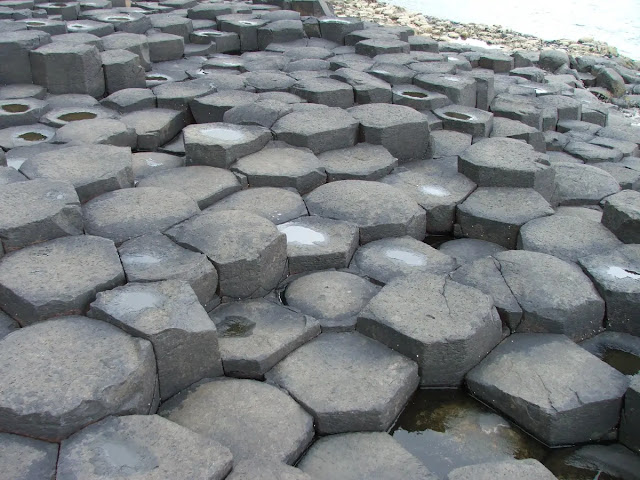4.1-Billion-Year-Old Crystal May Hold Earliest Signs of Life
When did life on Earth begin? Scientists have dug down through the geologic record, and the deeper they look, the more it seems that biology appeared early in our planet’s 4.5-billion-year history. So far, geologists have uncovered possible traces of life as far back as 3.8 billion years. Now, a controversial new study presents potential evidence that life arose 300 million years before that, during the mysterious period following Earth’s formation.
The clues lie hidden in microscopic flecks of graphite—a carbon mineral—trapped inside a single large crystal of zircon. Zircons grow in magmas, often incorporating other minerals into their crystal structures of silicon, oxygen, and zirconium. And although they barely span the width of a human hair, zircons are nearly indestructible. They can outlast the rocks in which they initially formed, enduring multiple cycles of erosion and deposition.
In fact, although the oldest rocks on Earth date back only 4 billion years, researchers have found zircons up to 4.4 billion years old. These crystals provide a rare glimpse into the first chapter of Earth’s history, known as the Hadean eon.
“They are pretty much our only physical samples of what was going on on the Earth before 4 billion years ago,” says Elizabeth Bell, a geochemist at the University of California, Los Angeles (UCLA), and lead author of the new study, published online today in the Proceedings of the National Academy of Sciences.
The team eventually found small bits of potentially undisturbed graphite in one 4.1 billion-year-old crystal. The graphite has a low ratio of heavy to light carbon atoms—called isotopes—consistent with the isotopic signature of organic matter. “On Earth today, if you were looking at this carbon, you would say it was biogenic,” Bell says. “Of course, that’s more controversial for the Hadean.”
The authors list several nonbiological processes that could explain their findings, but they favor the idea that the graphite started out as organic matter in sediments that got dragged into the Earth’s mantle during the collision of tectonic plates. As the sediments melted to form magma, the elevated temperatures and pressures transformed the carbon into graphite, which eventually found its way into a zircon crystal.
If this story is true, and life existed 4.1 billion years ago, Bell says that the new results would corroborate growing evidence of a more hospitable early Earth than scientists once imagined. “The traditional view of the Earth’s first few hundred million years was that this was a sterile, lifeless, hot planet that was constantly being bombarded by meteorites,” she says. But partly thanks to the wealth of information revealed by the Jack Hills zircons in recent years, scientists have come to see the early Earth as much milder and more amenable to life.
“We know there was liquid water,” says Mark van Zuilen, a geomicrobiologist at the Paris Institute of Earth Physics. “There’s nothing that holds us back from assuming life was there.” However, van Zuilen and others say they’re not sure the new study provides compelling evidence that it was.
“That one negative experience doesn’t mean nobody should try again,” says John Eiler, a geologist at the California Institute of Technology in Pasadena. “But let’s just say, I’m cautious.” For one, he says, researchers need to settle some important debates, like whether the inclusions in Hadean zircons truly preserve original material, or if they’ve been altered, for example, during a later bout of metamorphism. He also questions whether organic matter can survive in magma chambers long enough to form graphite, casting doubt on the proposed mechanism.
Those issues aside, most scientists—including the authors—agree that the data do not yet exclude nonbiological explanations. Many abiotic processes can produce carbon with isotopic signatures similar to organic matter. For instance, the graphite could contain carbon from certain kinds of meteorites, which have light isotopic compositions.
Alternatively, some invoke chemical processes, like the so-called Fischer-Tropsch reactions, in which carbon, oxygen, and hydrogen react with a catalyst like iron to form methane and other hydrocarbons. Such reactions probably occurred near hydrothermal vents in the Hadean, van Zuilen says, and can impart isotopic signatures that are indistinguishable from biological materials.
One way to settle the question that doesn’t rely on isotopes involves studying Mars, which, unlike Earth, still has rocks older than 4 billion years on its surface. “If we can find evidence for the existence of life on Mars at that time, then it will be easier to argue the case that it was also present on Earth,” says Alexander Nemchin, a geochemist at Curtin University in Bentley, Australia, and lead author of the 2008 study on diamond inclusions.
For now, scientists must make do with zircons, the only materials that preserve any record—however cryptic—of the Hadean eon. Bell acknowledges the need to test her team’s hypothesis on additional samples. She says researchers must make a concerted effort to find more Hadean carbon in Jack Hills zircons and see if it too has potentially biological origins. “Hopefully we didn’t just chance on the one freak zircon that had graphite in it,” she says. “Hopefully there is actually a fair amount of it.”
The study was published in the journal the Proceedings of the National Academy of Sciences.




%20(1).webp)




